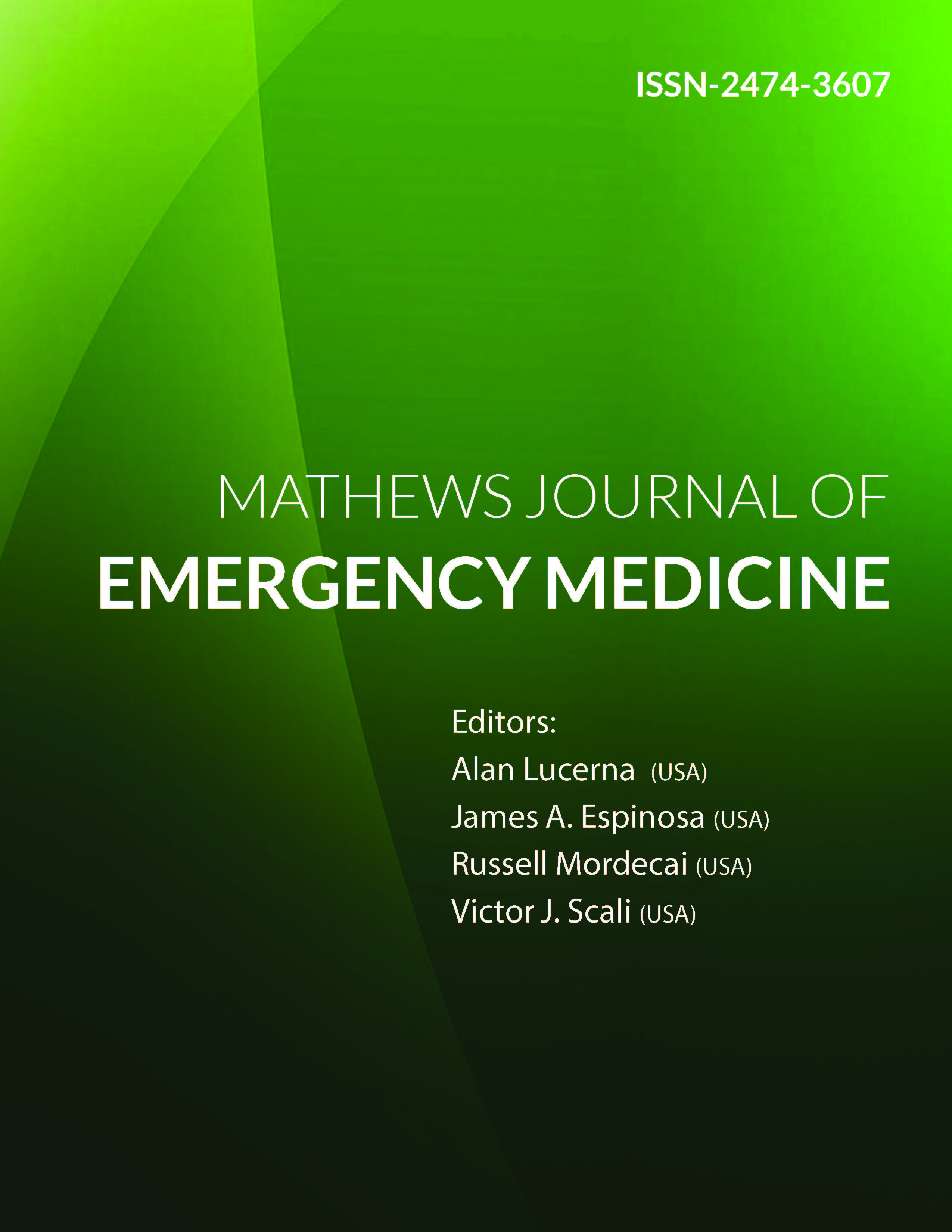
Information Links
Previous Issues Volume 1, Issue 1 - 2016
An Emergency Department Study of White Coat and Related Provider Role Identifiers as Role Signifiers and an Assessment of a Patient Education Intervention on Patient Choice of Physician Dress: When the Evidence Indicates That a White Coat Based Role Identification System Underperforms a Homan’s Sign, It’s Time to Say Goodbye
Ellen Kurkowski1 , Lauren Muchorski2 , James Espinosa3 , Victor Scali4
1Department of Emergency Medicine, Hackensack University Medical Center, Hackensack, NJ, USA.
2Department of Emergency Medicine, Rowan University SOM Kennedy University Hospital, Stratford, NJ, USA, Department of Emergency Medicine, Virtua Hospital, Voorhees, NJ, USA.
3Department of Emergency Medicine, Rowan University SOM Kennedy University Hospital, Stratford, NJ, USA.
4Program Co-Director, Emergency Medicine Residency, Rowan University SOM, Stratford, NJ, USA.
Corresponding Author: James Espinosa, Department of Emergency Medicine, Rowan University SOM Kennedy University Hospital, 18 East Laurel Road, Stratford, NJ 08084, USA. Tel: +1 646 241 5695; E-Mail: [email protected]
Received Date: 29 Feb 2016
Accepted Date: 21 Mar 2016
Published Date: 24 Mar 2016
Copyright © 2016 Espinosa J
Citation: Kurkowski E, Muchorski L, Espinosa J and Scali V. (2016). An Emergency Department Study of White Coat and Related Provider Role Identifiers as Role Signifiers and an Assessment of a Patient Education Intervention on Patient Choice of Physician Dress: When the Evidence Indicates That a White Coat Based Role Identification System Underperforms a Homan's Sign, It's Time to Say Goodbye. Mathews J Emergency Med. 1(1): 004.
ABSTRACT
A remarkable debate is forming up, concerning white coats in particular, and hospital personnel dress/uniform practices in general. Currently, the white coat is worn by physicians, medical students, nurse managers, pharmacists, physical therapists, nutritionists, and case managers. How accurate is the current signaling system in a hospital setting, in specific provider roles, as perceived by patients? How do patients feel their physicians should dress? Would their choices change after a brief educational intervention related to the potential of the white coat as a fomite? The purpose of this study was to look at those questions, with a particular interest in the role of the white coat as a physician identifier.
This study demonstrated that a group of non-medical participants moved rather strongly in the direction of non-white coat physician provider choices, after a brief educational intervention on the fomite nature of the white coat. The performance of the white coat, and the white coat related dress system to indicate provider identity was very poor. The overall accuracy was only 29%. Sensitivity of the overall system was only 44%, with related poor performance in specificity, positive predictive value, negative predictive value, positive likelihood ratio and negative likelihood ratios. The signaling system of coats, no coats, scrubs and professional wear performed at the level, or worse, than the antiquated and evidence-based medicine rejected Homan's sign.
Perhaps it is time to say goodbye to the white coat and to build a role-identification signaling system that performs with more accuracy.
KEYWORDS
White Coats in Healthcare; White Coats and Physicians; Physician Dress; Healthcare Uniforms; Healthcare Provider Uniforms; Symbolism in Medicine; Physician Attire; Nursing Uniforms in Healthcare; Ancillary Provider Uniforms in Healthcare.